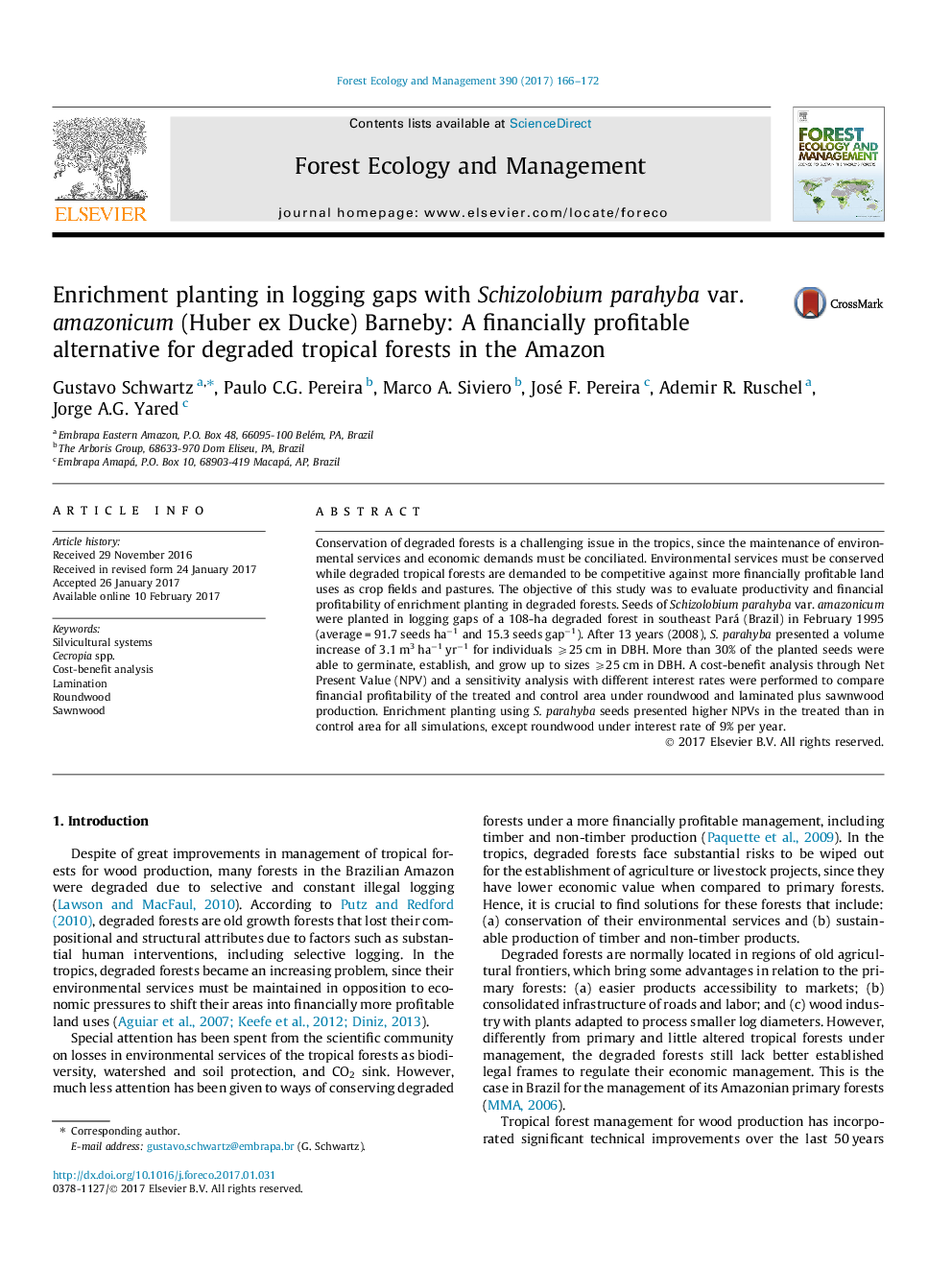| Article ID | Journal | Published Year | Pages | File Type |
|---|---|---|---|---|
| 6459523 | Forest Ecology and Management | 2017 | 7 Pages |
â¢Schizolobium parahyba var. amazonicum had high wood production in degraded forest.â¢Enrichment planting in logging gaps with S. parahyba seeds was a successful treatment.â¢Enrichment planting in logging gaps with S. parahyba was financially profitable.â¢Harvesting cycles of S. parahyba and Cecropia spp. can be shortened to 13 years.â¢Lamination was the most profitable way to process S. parahyba and Cecropia spp. wood.
Conservation of degraded forests is a challenging issue in the tropics, since the maintenance of environmental services and economic demands must be conciliated. Environmental services must be conserved while degraded tropical forests are demanded to be competitive against more financially profitable land uses as crop fields and pastures. The objective of this study was to evaluate productivity and financial profitability of enrichment planting in degraded forests. Seeds of Schizolobium parahyba var. amazonicum were planted in logging gaps of a 108-ha degraded forest in southeast Pará (Brazil) in February 1995 (average = 91.7 seeds haâ1 and 15.3 seeds gapâ1). After 13 years (2008), S. parahyba presented a volume increase of 3.1 m3 haâ1 yrâ1 for individuals ⩾25 cm in DBH. More than 30% of the planted seeds were able to germinate, establish, and grow up to sizes ⩾25 cm in DBH. A cost-benefit analysis through Net Present Value (NPV) and a sensitivity analysis with different interest rates were performed to compare financial profitability of the treated and control area under roundwood and laminated plus sawnwood production. Enrichment planting using S. parahyba seeds presented higher NPVs in the treated than in control area for all simulations, except roundwood under interest rate of 9% per year.
